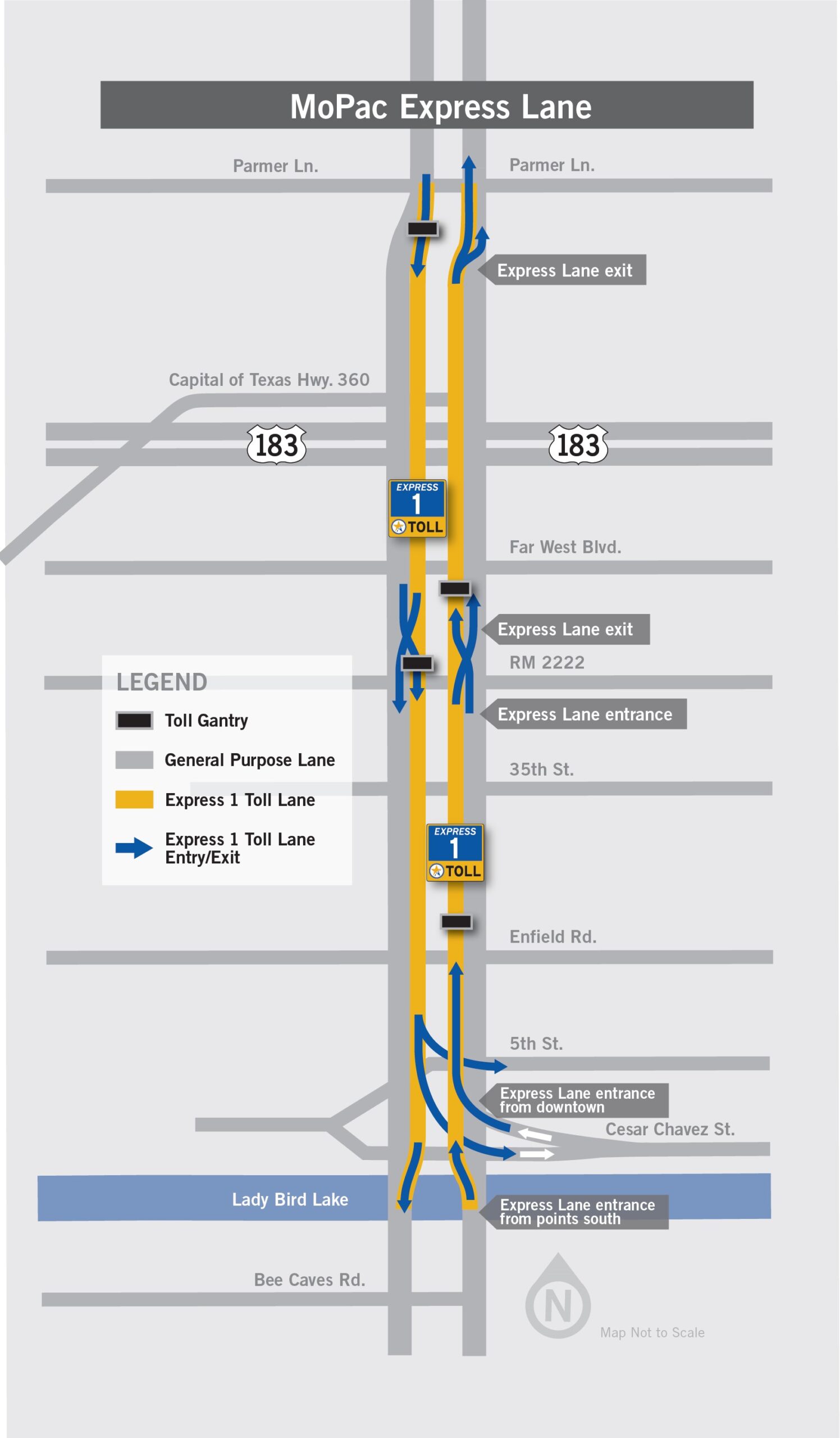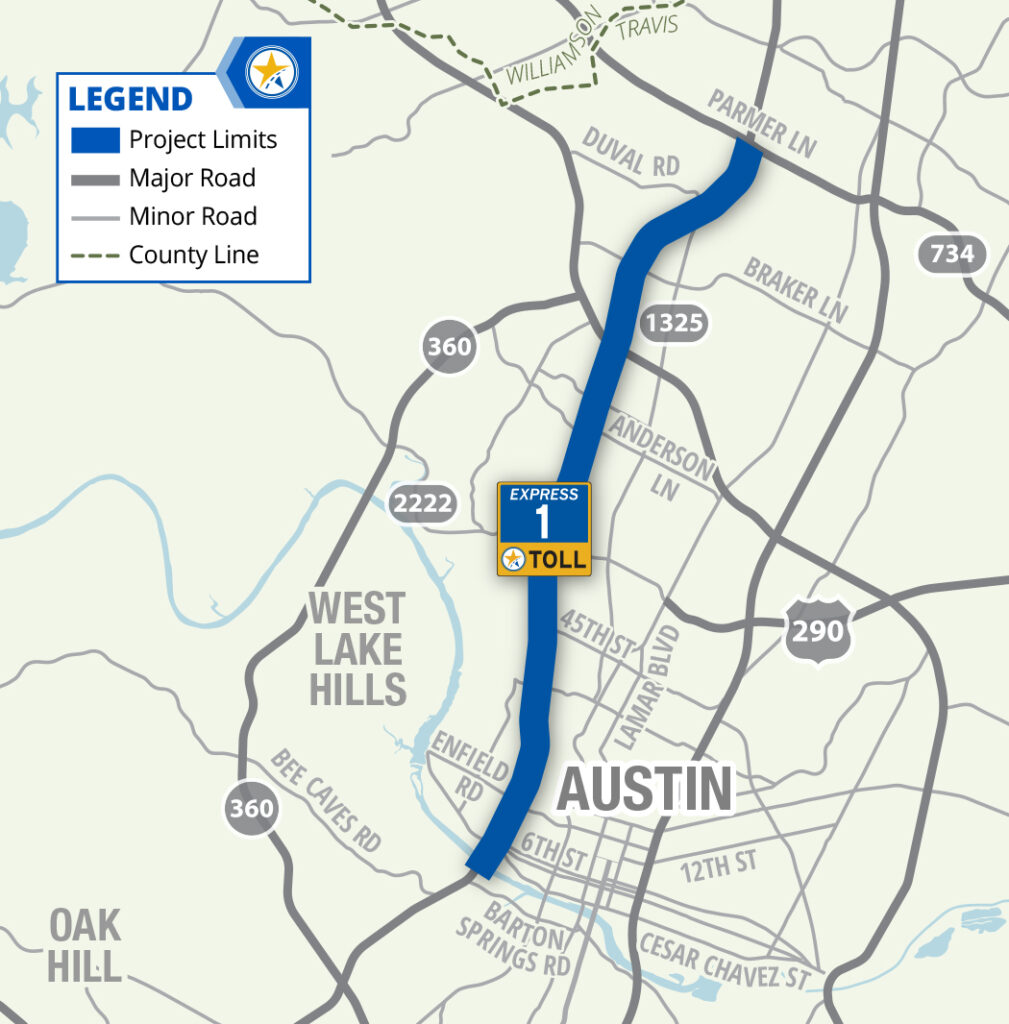MoPac Express Lane
An 11-mile variably-priced tolled express lane along MoPac between Cesar Chavez Street and Parmer Lane
Those wanting to bypass traffic congestion have a choice to use the MoPac Express Lane. Drivers who prefer not to pay a toll can use the non-tolled lanes on MoPac.
About the MoPac Express Lane
-
01.
-
02.
-
03.
-
04.
-
05.
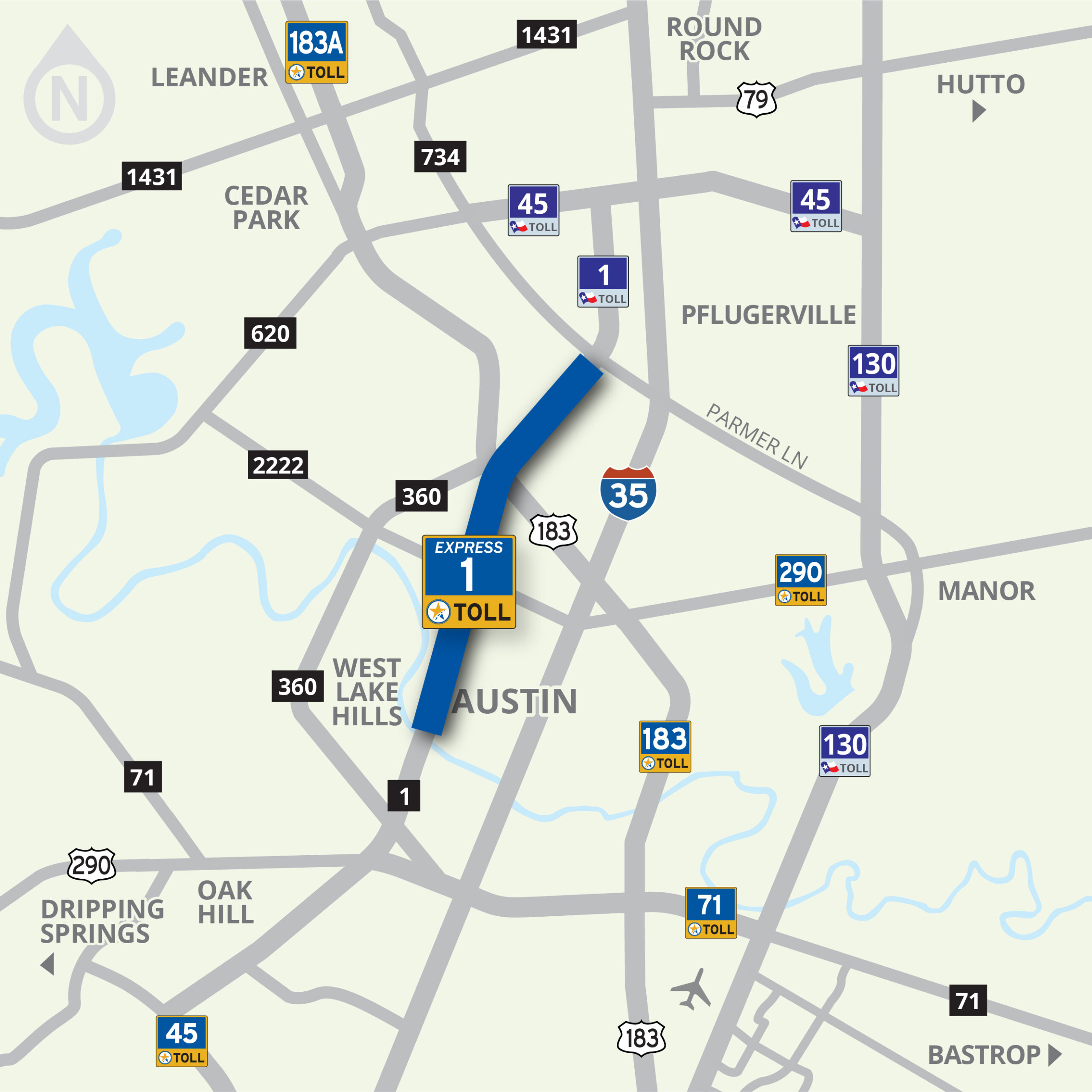
Drivers should not attempt to cross the delineators, as they will cause vehicle damage. Trucks and trailers are prohibited from the Express Lane.
Learn more information about the project’s bicycle and pedestrian facilities.
Additional Information
For real-time updates on incident management in the corridor, check us out on Twitter.
Use Your Electronic Tag or Drive on Through, We’ll Bill You
The MoPac Express Lane is completely automated with no need to stop or even slow down at toll booths. The choice is yours – utilize the all-electronic, or cashless, tolling method of payment through an electronic tag account; or if you don’t have an electronic tag just keep moving, and we’ll bill you through the Pay By Mail program.
In Texas, there are multiple transportation agencies that are authorized to operate toll roads, issue their own electronic tag, and do their own billing. In the Austin area, there are two: the Texas Department of Transportation (TxDOT) and the Central Texas Regional Mobility Authority (Mobility Authority).
Mobility Authority customers can pay their tolls with a TollTag, EZ TAG, Fuego Tag, K-TAG, Pikepass, SunPass, E-470’s ExpressToll or Bancpass (the Mobility Authority also accepts TxTAG, which is now operated by HCTRA) and get a 33% discount, or they can choose to Pay By Mail. Pay By Mail customers are billed using a picture of their license plate, and are charged a $1.00 statement fee per bill. Vehicle registration information must be up to date in order for the bill to be sent to the correct address. Pay By Mail is available on all toll roads in Central Texas, although you may receive separate bills depending on which agency operates the road you traveled on.
To learn about paying your tolls, see the download available below.
Traffic Incident & Management Center
The Traffic Incident & Management (TIM) Center is the heart of the Mobility Authority’s intelligent transportation system. The TIM Center affords us the ability to monitor our facilities as well as coordinate resources for incident management and maintenance, enabling efficient responses to accidents and other interruptions to traffic flow.
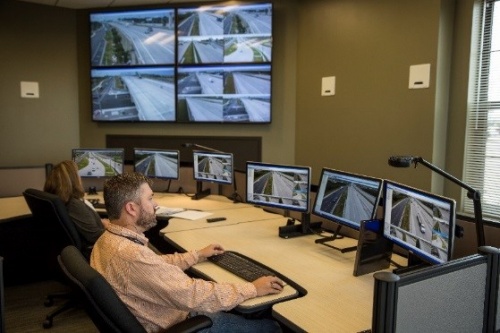
Electronic Message Boards Display Toll Price
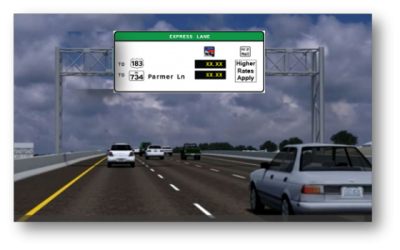
72 Hour Delay
To ensure accurate charges, the payment processing for MoPac toll transactions are delayed so that the trips can be billed accurately. Any necessary price adjustments are made during this 72-hour delay period to ensure that drivers are not overcharged when they receive their bill. In addition, cameras capture photos of the Express Lane pricing signs with time and date stamps at every transaction.
Interested in Adjacent Projects?
Learn about the proposed improvements to MoPac between Cesar Chavez Street and Slaughter Lane.
Images & Maps
-
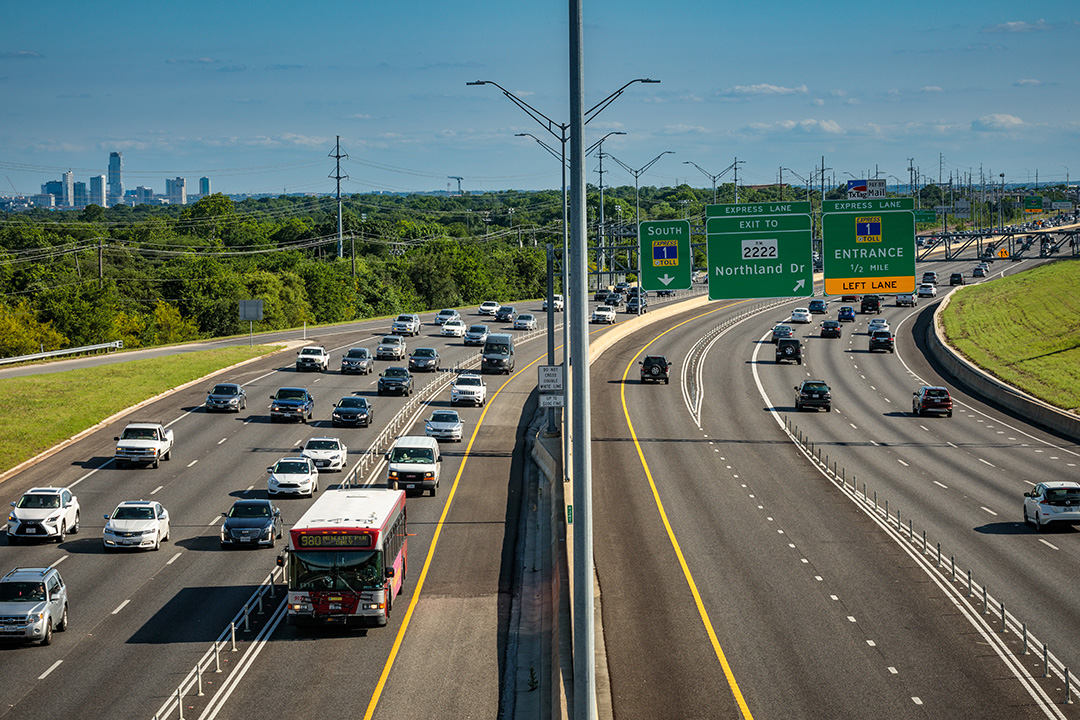
MoPac Express Lane with Capital Metro Bus -
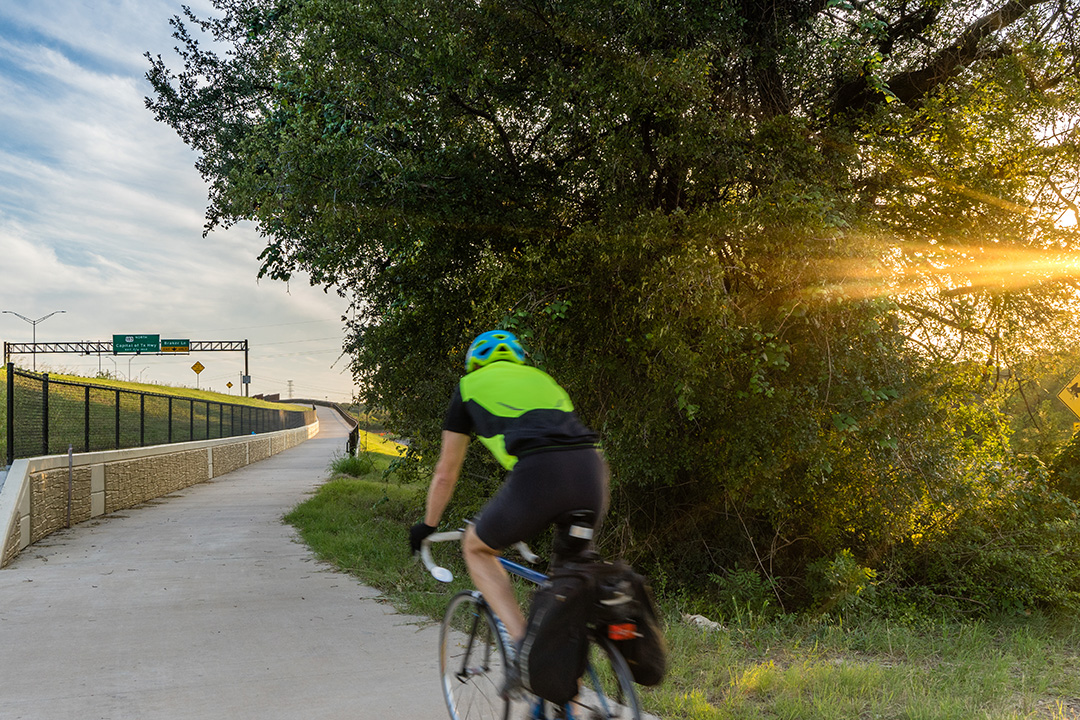
MoPac Shared Use Path -

MoPac Express Lane with Capital Metro Bus -

MoPac Shared Use Path -

MoPac Express Lane with Capital Metro Bus -

MoPac Shared Use Path
